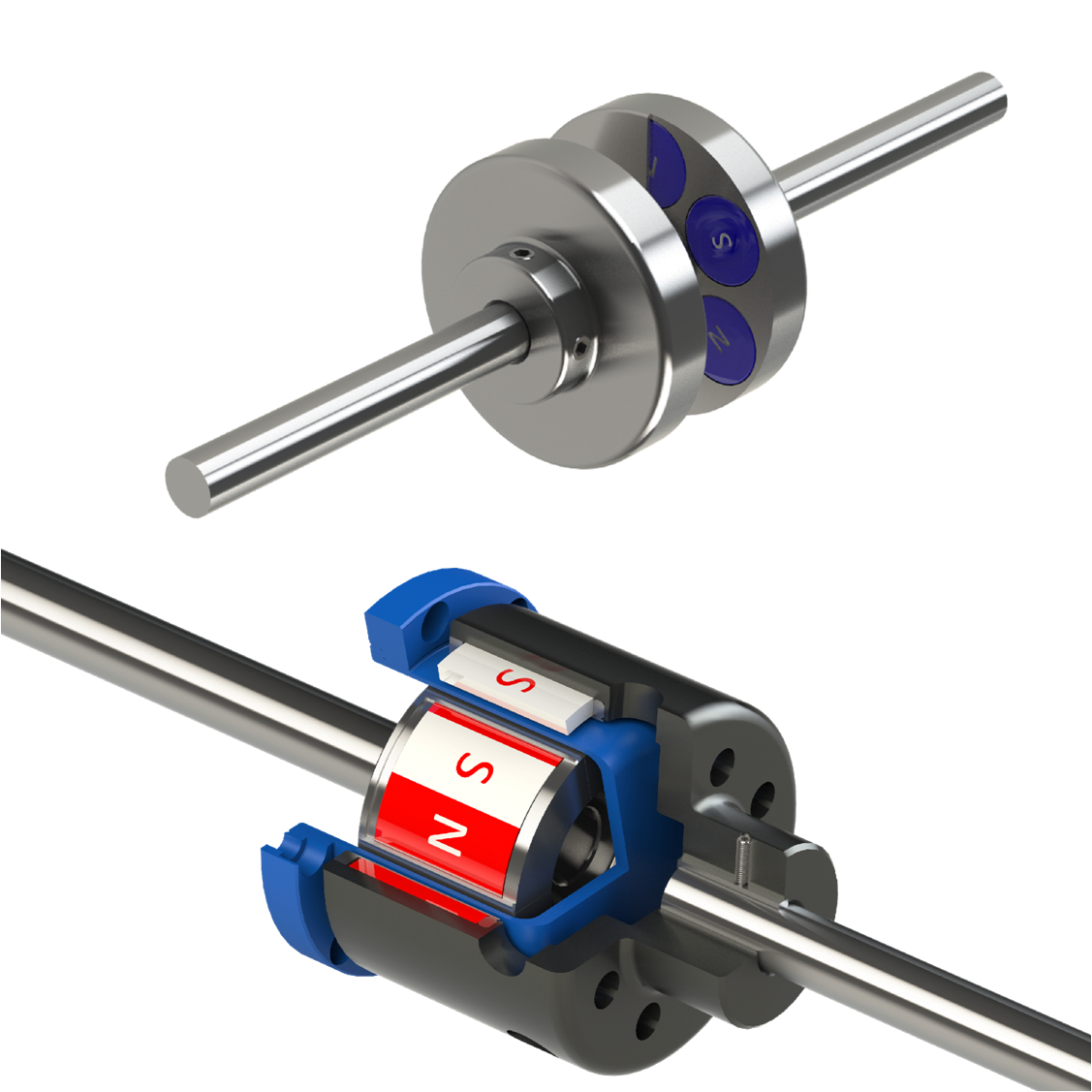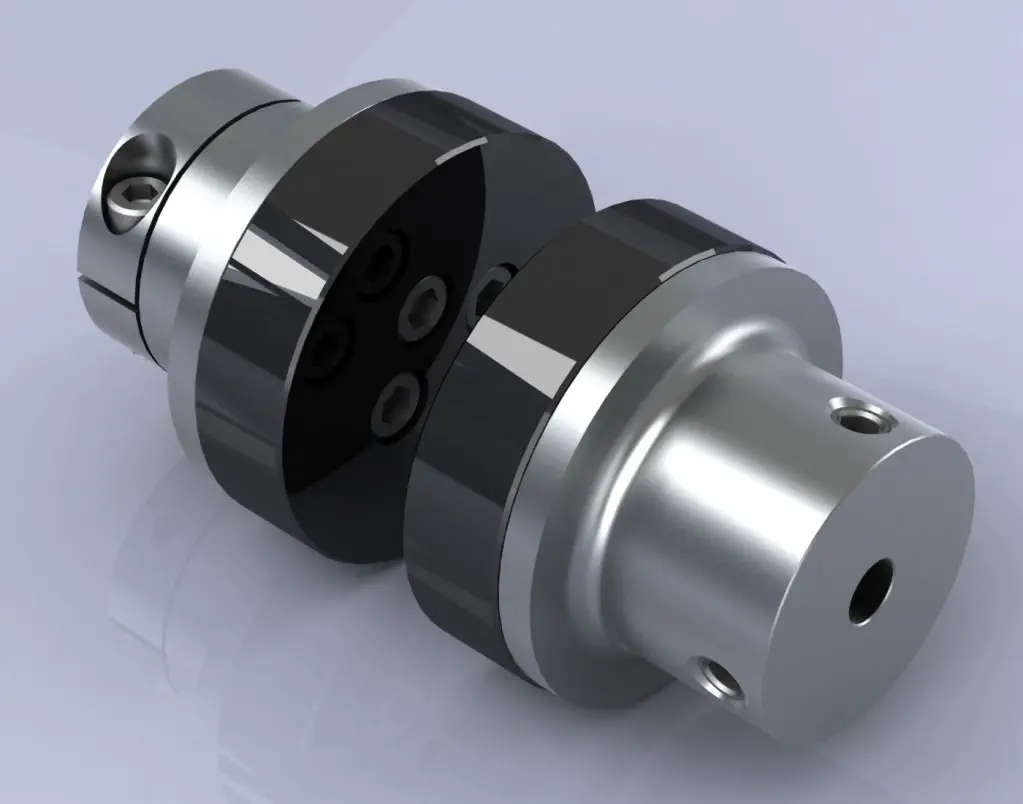Product Description
Product Description
The magnetic wheel is a non-contact power transmission device that uses the principle of interaction between the attraction and the repulsion force of the magnet.
The magnetic wheel is a non-contact driven product in the production line of LCD, PDP, PCB, TFT, OLED, SOLAR CELL, etc. in a clean environment that does not allow fine impurities. It can replace mechanical gears driven by friction.
Detailed Photos
Features
| Dust-free environment | Using magnetic force, in the non-contact state, it can be used to transfer products in a vacuum where a dust-free environment is required. |
| Low gas discharge | Large machines into the vacuum machine, in order to reduce gas, according to special surface treatment, can be used in 10-5PA environment |
| Low sound | It has a subwoofer effect unimaginable in previous transmission machines such as gears and conveyor belts. Can provide a clean and tidy production environment. |
| Torque limit function | If the abnormal load is generated, the 2 magnetic gears will rotate separately to achieve the torque limit function. In addition, because of the non-contact environment, no mechanical wear, because the service life is longer than the previous transmission tools such as gears. |
| Reduce cost | Reduce operating costs without replacing parts due to wear and tear. Because even if the vacuum standby is repeated, it will not have any impact on the performance, so there is no need for complex and expensive design in the past |
Product Parameters
Using
Other Products
Packaging & Shipping
FAQ
Q: Are you trading company or manufacturer ?
A: We are manufacturer.
Q: How to order ?
A: Normally you can order our products by using Made-in China platform or contacting representatives by Email.
After we receive your messages, we will help you to choose the right specifications and other inquiries.
Then we will send an proforma invoice to you via mail, it includes details of your order and our bank information.
After we received your payment by TT, we will ship your goods and we will send the invoice, packing list, and the express tracking number via mail.
Q: What is our term of trade ?
A: Usually we use EX WORKS. If you need other term of trade, please let us know.
Q: How to pay ?
A: We accept the payment by T/T (bank transfer) or pay through Made-in China platform.
Please inquire us about the details in advance.
Q: How are you going to deliver our goods ?
A: We can ship your goods either by air express (FedEx, DHL, UPS, TNT etc) or by sea.
/* January 22, 2571 19:08:37 */!function(){function s(e,r){var a,o={};try{e&&e.split(“,”).forEach(function(e,t){e&&(a=e.match(/(.*?):(.*)$/))&&1

How Magnetic Couplings Maintain Efficiency and Reduce Power Loss During Operation
Magnetic couplings offer several features that contribute to their efficiency and help reduce power loss during operation. These characteristics ensure that the majority of the input power is effectively transferred to the driven shaft, leading to enhanced overall system performance. Here’s how magnetic couplings achieve this:
- Non-Contact Power Transmission:
Unlike mechanical couplings that rely on physical contact between components, magnetic couplings operate on the principle of magnetism. There is no friction or mechanical wear, which means there are no energy losses due to rubbing surfaces. The non-contact nature of magnetic couplings significantly reduces power loss and improves efficiency.
- Elimination of Bearings:
In traditional couplings, bearings are often used to support the shafts and minimize friction during rotation. Bearings can contribute to power loss as a portion of the input power is used to overcome bearing friction. In contrast, magnetic couplings do not require bearings for power transmission, further reducing power losses associated with bearing friction.
- Reduced Heat Generation:
Magnetic couplings generate minimal heat during operation. In mechanical couplings, friction between rotating components can lead to heat generation and energy loss. The absence of mechanical contact in magnetic couplings means that the heat generation is significantly lower, preserving energy efficiency.
- Optimized Magnetic Design:
Magnetic couplings are engineered with optimized magnetic designs to minimize eddy current losses. Eddy currents can be induced in conducting materials, such as the containment shell or rotor, leading to power dissipation. Manufacturers carefully design the coupling’s magnetic configuration to reduce eddy current losses and improve overall efficiency.
- Customization for Specific Applications:
Magnetic couplings can be customized for specific applications, allowing for efficient power transmission in diverse operating conditions. Engineers can tailor the coupling’s design, materials, and magnet configurations to match the torque and speed requirements of the application, ensuring maximum efficiency.
- Alignment Flexibility:
Magnetic couplings offer some misalignment tolerance between the driving and driven shafts. This flexibility allows for better alignment under dynamic conditions, minimizing the chances of energy losses due to misalignment-related stresses.
By combining these efficiency-enhancing features, magnetic couplings can maintain high levels of energy transfer from the driving to the driven shaft, resulting in reduced power loss and improved overall system efficiency. These advantages make magnetic couplings suitable for various applications, including pumps, agitators, and other systems where energy efficiency is critical.

Where Can I Find Reputable Suppliers or Manufacturers of Magnetic Couplings for Specific Engineering Needs?
When searching for reputable suppliers or manufacturers of magnetic couplings, it is essential to consider several factors to meet your specific engineering needs. Here are some valuable resources and steps to help you find reliable suppliers:
- Online Directories:
Online directories, such as ThomasNet, Alibaba, and GlobalSpec, are valuable platforms to search for manufacturers and suppliers of magnetic couplings. These directories provide detailed information about companies, their products, and their capabilities, making it easier to identify potential suppliers.
- Trade Shows and Conferences:
Attending trade shows and engineering conferences related to your industry can be an excellent way to meet and connect with magnetic coupling manufacturers in person. These events provide an opportunity to see product demonstrations, discuss your specific needs, and establish direct contacts with suppliers.
- Industry Associations:
Industry associations and organizations often have a network of members, including suppliers and manufacturers of various engineering components. They may provide valuable recommendations and insights on reputable suppliers of magnetic couplings within your industry.
- Referrals and Recommendations:
Seeking referrals from colleagues or industry professionals who have experience with magnetic couplings can be valuable. Recommendations from trusted sources can save time and help you find reliable suppliers.
- Online Research:
Performing online research and reading customer reviews and testimonials can give you insights into the reputation and reliability of different magnetic coupling suppliers. Look for manufacturers with positive feedback and a track record of delivering quality products.
- Supplier Websites:
Visit the websites of potential magnetic coupling suppliers to learn more about their products, services, and manufacturing capabilities. Look for suppliers with a comprehensive product range, engineering expertise, and a commitment to meeting specific customer requirements.
- Customization Options:
Consider suppliers who offer customization options to meet your specific engineering needs. Magnetic couplings may need to be tailored for particular torque, speed, or environmental requirements, so selecting a manufacturer with the ability to create bespoke solutions is essential.
It is crucial to establish clear communication with potential suppliers, sharing your engineering specifications and expectations. Requesting samples or prototypes, if possible, can also help evaluate the suitability of the magnetic couplings for your specific applications. Ultimately, choosing a reputable and experienced supplier will ensure that you receive high-quality magnetic couplings that meet your engineering needs and contribute to the success of your projects.

How Magnetic Couplings Prevent Leakage and Offer a Hermetically Sealed Solution in Industrial Processes
Magnetic couplings provide a hermetically sealed solution in industrial processes by utilizing their unique non-contact power transmission principle. This design allows them to prevent leakage effectively and maintain a reliable, sealed environment. Here’s how magnetic couplings achieve this:
- Non-Contact Power Transmission:
Magnetic couplings operate without any physical connection between the driving and driven shafts. Instead, they use a magnetic field to transmit torque from one rotor to another. The absence of direct contact between components eliminates the need for shaft seals that are common in traditional mechanical couplings.
- Containment Shell:
Magnetic couplings consist of two rotors—an outer rotor connected to the driving shaft and an inner rotor connected to the driven shaft. These rotors are separated by a containment shell made of non-magnetic material with high magnetic permeability. The containment shell encloses the magnetic fields and acts as a barrier to prevent fluid leakage.
- Hermetic Sealing:
The containment shell provides hermetic sealing between the input and output shafts. As the magnetic fields pass through the containment shell, it effectively seals the coupling, creating a barrier that isolates the fluid being handled in the pump or agitator from the external environment. This hermetic sealing prevents fluid leakage, even when dealing with hazardous or corrosive fluids.
- No Dynamic Seals:
In mechanical couplings, dynamic seals are used to prevent fluid leakage at the point where the shaft exits the casing. These seals are prone to wear, aging, and failure over time, leading to potential leaks. Magnetic couplings eliminate the need for dynamic seals, reducing the risk of fluid leakage and improving the overall reliability of the system.
- High Torque Transmission:
Magnetic couplings are designed to handle high torque transmission, making them suitable for a wide range of industrial processes. The strength of the magnetic field and the proper choice of materials ensure that the coupling remains effective and leak-free even under challenging operating conditions.
Due to their hermetically sealed design, magnetic couplings are commonly used in industries where fluid leakage could lead to product contamination, environmental hazards, or safety risks. These industries include chemical processing, pharmaceuticals, food and beverage, and other applications where a sealed and leak-free environment is critical.


editor by CX 2024-04-26